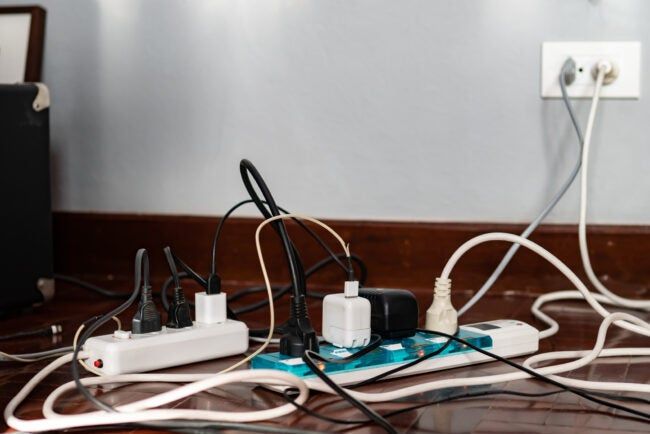
Power strips are incredibly handy for extending the number of devices you can plug into a single outlet. However, not all devices are safe to use with a power strip, and plugging the wrong things into one can lead to overheating, electrical fires, or damaging your equipment. Here are seven things you should never plug into a power strip.
1. High-Powered Appliances (e.g., Space Heaters, Toasters, Microwaves)
High-powered appliances like space heaters, toasters, and microwaves draw a significant amount of current. Power strips are not designed to handle the large electrical loads that these devices require. Plugging one of these into a power strip can overload it, causing it to overheat or even catch fire. Always plug high-powered appliances directly into a wall outlet to ensure they get the power they need safely.
2. Hair Dryers and Curling Irons
Hairdryers and curling irons generate heat and are high-wattage devices. While they are small, they draw a substantial amount of electricity, which is too much for a typical power strip to handle. Plugging these devices into a power strip can cause it to trip or overheat, risking both your electronics and personal safety. It’s always best to plug them directly into a wall socket.
3. Refrigerators and Freezers
These large appliances, especially refrigerators and freezers, have compressors that need a stable and substantial power supply. Power strips are not built to provide this, and attempting to plug a refrigerator or freezer into one can overload the strip. This could damage the appliance or cause the power strip to fail. Always connect these types of appliances directly to a grounded outlet for safety.
4. Air Conditioners
Similar to refrigerators and freezers, air conditioners are heavy-duty appliances that require a lot of power. Power strips are simply not designed to handle the electrical demand of air conditioners, especially during startup when they draw even more power. Plugging an air conditioner into a power strip can cause overheating and lead to potential fire hazards. It’s essential to plug air conditioners directly into a wall outlet to ensure safe operation.
5. Monitors and TVs (When Used With Other Devices)
While most monitors and televisions have a relatively low power draw on their own, plugging them into a power strip along with other devices can add up quickly. The power strip could easily become overloaded if you’re using a combination of devices like a computer, gaming console, and speakers. To avoid overloading, it’s best to plug these larger electronics directly into a dedicated wall outlet or ensure the power strip has a high enough wattage rating.
6. Large Power Adapters (e.g., Laptops and Charging Stations)
Many laptops and electronics come with large power adapters that can take up a lot of space on a power strip. When you plug these into a power strip, the combined power draw from the laptop and the adapter can exceed what the strip is capable of handling. Additionally, these bulky adapters can block adjacent outlets on the power strip, reducing the number of devices you can safely plug in. It’s better to use a dedicated outlet for large power adapters to prevent any overloads.
7. Medical Equipment
Medical devices such as oxygen machines, CPAP machines, or other life-saving equipment should never be plugged into a power strip. These devices require a consistent and reliable power source, and using a power strip could compromise their functionality. Power strips can be tripped by overloaded circuits or faulty connections, potentially causing the device to lose power when it’s most needed. Always connect medical equipment directly to a wall outlet for safety.
Conclusion
Power strips are excellent for providing additional outlets, but it’s important to understand their limitations. Plugging the wrong devices into a power strip can not only damage your equipment but also pose a significant safety risk. Always check the power requirements of your devices and ensure that high-powered appliances or sensitive electronics are plugged directly into a dedicated wall outlet. By doing so, you’ll ensure the longevity of your equipment and reduce the risk of accidents.






